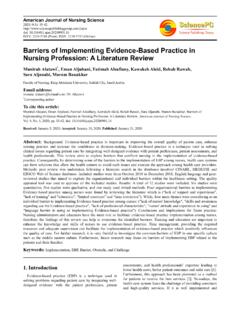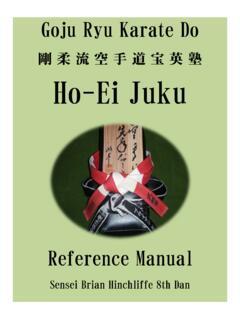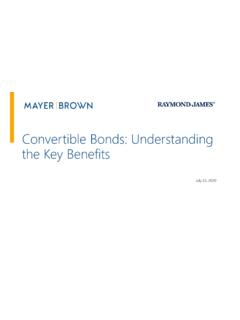Transcription of COMPLETE TAI CHI - Black Belt at Home
1 1 COMPLETE TAI CHI FOR BEGINNERS YANG STYLE HOME STUDY MANUAL 2014 Jon Hodge and Hodgy LLC 2 About COMPLETE Tai Chi COMPLETE Tai Chi for Beginners is a simple system of learning the fundamentals of Tai Chi and energy work in a straightforward building block method. There are four basic levels that build on each other progressively making it easy to follow and understand. This program is unique and is the one of the 1st COMPLETE Tai Chi home study courses in the world. What's in the home study course? This home study course contains four DVD s labeled level 1 through level 4 and a comprehensive Home Study Manual which supports the DVD s. Each DVD level is broken down into four sections: 1. Introduction - A simple explanation of what is in the DVD level. 2. Warm Up - A simple low impact follow along stretching and warmup for each DVD level.
2 The warm up routines are comprised of traditional stretching, eastern temple exercises and shaolin 18 lohan. 3. Elements - Demonstration, breakdown and instruction for each basic Tai Chi element covered in the DVD level. The section also includes a simple Chi Kung follow along routine working on the basic elements. 4. Form - A simple pattern of Tai Chi elements strung together into a flowing form. Each level form is simple yet powerful and covers the basic elements for the DVD level. The level form is demonstrated with front, back and angle views and a COMPLETE breakdown and instruction is given for the development of the form. A follow along form is provided for practice. Some Basic tips for Home Study Take your time - One of the nice things about home study is you can learn at your pace and schedule.
3 You can specifically work an area of development as you need it. The 3 DVD s are set up in a simple progression in an orderly fashion. Skipping around in DVD s can cause confusion and lead you to miss some important information and get you frustrated. So we suggest that you stay in the progression given and become comfortable with new items and elements before going to the next section or level. Don t get frustrated - go slowly and practice regularly. If you hit a section the is difficult, slow down or back up and work in it out. You are in control, you can rewind, use slow motion, pause and play as needed. Each DVD section is a Gold Mine of Health, Well Being and Energy - this system is packed with healing and energy work. Any one of the DVD level sections within this course by themselves can give a great workout and with heart, focus and intent can create balance and harmony in your life.
4 The Five Power Principles of this System (1) Breathing - deep breathing is used, in through the nose, out through the mouth. I use a forced exhalation technique so the air takes longer to go out than in. That way I get all the oxygen out of the air into my blood supply. When we inhale I use the term Yin breath, and exhale is the Yang breath. Yin is to bring in or internalize. Yang is to send out and externalize. Sometimes we talk about Yin and Yang Energy. So Yin energy is being brought into our system and Yang energy is being sent out. (2) Movement - what happens when an individual sits on couch all day, day after day and simply does nothing. They become lethargic and out of balance. Their system is stagnant and disease easily sets in. Movement is critical in the Health, Harmony and Balance of the Human body and energy system.
5 When you move your electrical system is working and energizing different areas of the body. When you move blood is pumped more thoroughly through the body and a cleansing process is working through the pulsing and pumping of the system. (3) Relaxation - If you take a water hose and kink it, the flow of water is reduced. Runners actually run relaxed breathing deeply through the run. So be relaxed when you exercise and allow the flow of energy through your system. 4 (4) Focus - be present in the moment. Be aware, stop the chatter in your mind. Focus on your body, how does it feel? How does my whole body feel? The power of your BEING exist in the stillness of no-thought. Focus on your breathing and how your body feels. (5) Intent - is to have the view in mind of this exercise and journey BEING, Health, Harmony and Balance for you.
6 It is having a positive mind set toward better a greater way of BEING. At first you will have to pay attention to what you are doing with the Five Power Principles. With, in and through each exercise become the Five Principles. Then in time they will reward you with Health, Harmony and Balance. Meditation From actual real experience I have determined that meditation is an important factor to the wellbeing and harmony of the human mind, body, spirit and emotional complexes. I personally use several different forms of meditation depending on my feeling and life situation. What I mean by feeling is the monitoring of my mind, body, spirit and emotional systems. What is happened to most humans in this day and age is the lack of balance in their system by over identification with one of the four areas, mind, body, spirit and emotions.
7 Only through meditation and presence of BEING in stillness can one balance the wholeness of system they are comprised of. Here are some simple meditations for you to try out and use: This simple breathing meditation technique which you are about to learn is one of the oldest and the simplest of all the meditation techniques I know of. It is one of my favorites. You can do it at any time, anywhere. It is quite effective also as newcomers to meditation find it easier to grasp, understand and do. The immediate effect of this meditation technique is a feeling of being centered, calm and at peace. I ll talk about other benefits later on in this article. 5 Right now lets go and see what are the general prerequisites of meditation. Understanding these prerequisites of meditation will help you reach the meditative state much more quickly and will help immensely in your meditation practice.
8 SIMPLE BREATHING MEDITATION TECHNIQUE Sit down making a comfortable posture. Your back should be straight, neither too stiff nor too loose. Your posture should not make you feel lazy or sleepy and neither it should make you feel uncomfortable. The spinal cord in this natural position acts as a channel for the energy to flow from your root chakra (base of spinal cord) to your crown chakra (top of your head). If closing your eyes helps you achieve a better focus then close your eyes otherwise just look straight ahead without actually looking at any thing specific. I usually close my eyes as it helps me in focusing my mind better. Now put your attention on your breath. Breathe normally through your nostrils. The rhythm of your breath may change as you start focusing on it. Sometimes it may get heavier and sometimes lighter and faster.
9 Don t worry about the change. Just keep your attention focused on your breath. Just be with your breath as you inhale and exhale. The object of meditation is the sensation of breathing. As you go deeper into the meditative state, you will automatically feel other thoughts leaving your mind. At first you may feel a sudden rush of thoughts trying to get your attention. Don t let it bother you. Don t resist your thoughts either. If you will resist your thoughts they will usually lead you astray. Just accept them, acknowledge them and as you see your attention wandering, bring it back gently to your breath again. After some practice the mental chatter will stop and the distracting thoughts will leave you alone as they won t find any host willing to give them a place to linger on. Think of the distracting thoughts as dust.
10 In our normal state of awareness the dust is always there and we don t notice it because we are too busy interacting with it subconsciously. 6 Once you still your mind, its like holding the wind all of a sudden. As the wind dies down and you become more aware, you tend to notice the dust acutely. Just remember that it was there all along. It s just that you noticed it just now. The dust will settle down by itself as there is no wind to carry it around anymore. Just be patient. In the beginning you can keep an alarm clock with you, set to 15 minutes and you can come out of your meditation when it rings. With practice you will actually be able to instruct your mind to come out of meditation after a desired span of time. If you find it impossible to sit still for 15 minutes, start from 5 minutes.



